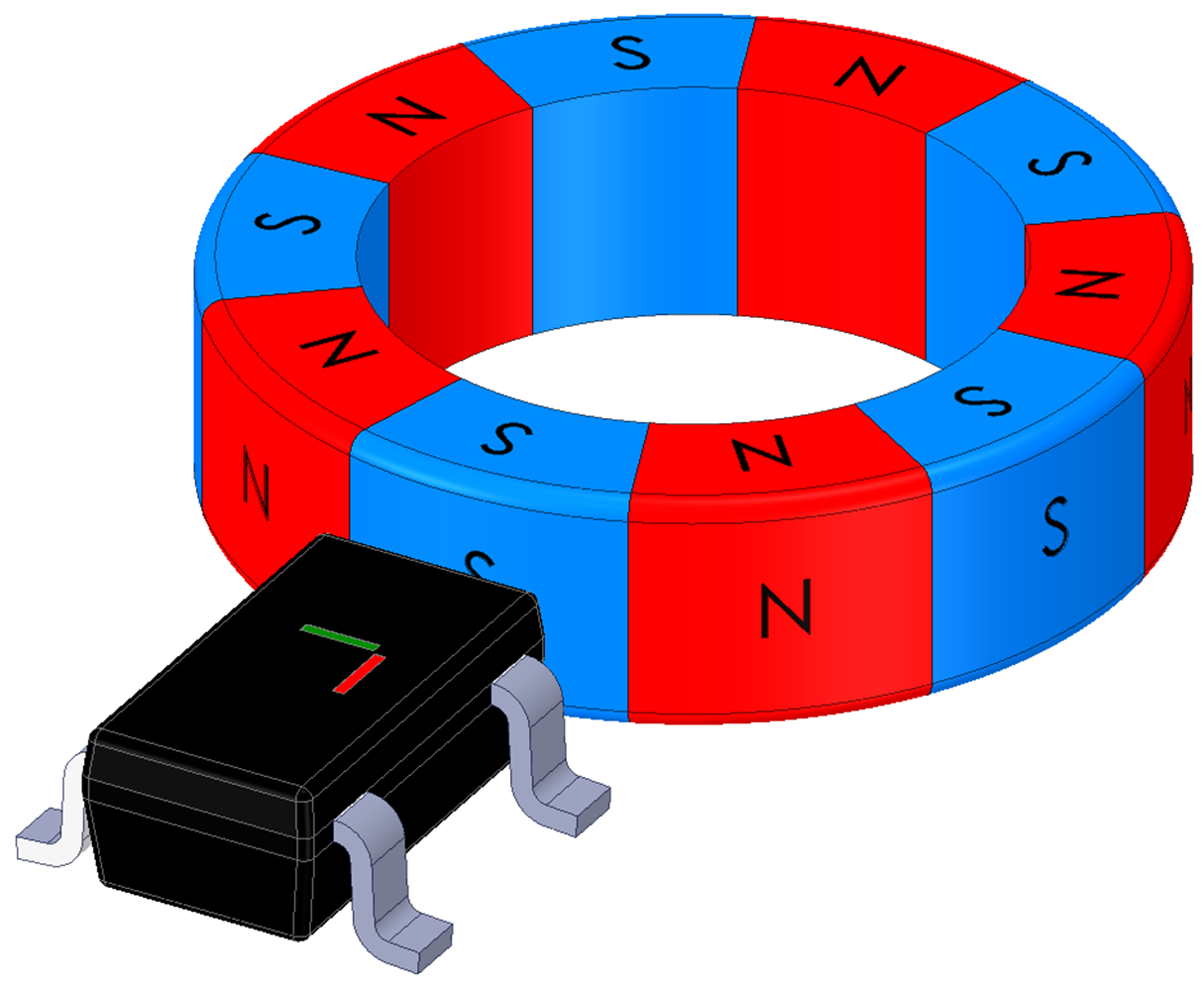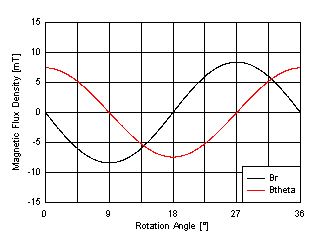SBAA449B October 2020 – October 2021 TMAG5110 , TMAG5110-Q1 , TMAG5111 , TMAG5111-Q1
3.2.2.2 In-Plane Magnetic Field
Figure 3-20 shows in-plane placement. Instead of using two separate devices to detect quadrature, we have a single 2D sensor coplanar to the magnet.
 Figure 3-20 Sensor In-Plane.
Figure 3-20 Sensor In-Plane. The radial component of the magnetic field is about the same amplitude here as it was beneath the magnet with a smaller air gap. When placed with a 3.25 mm spacing between the sensor and the magnet face we notice that the peak amplitudes between the two relevant components are quite similar, and there is no z-component.
 Figure 3-21 In-Plane Magnetic Field Components
Figure 3-21 In-Plane Magnetic Field Components